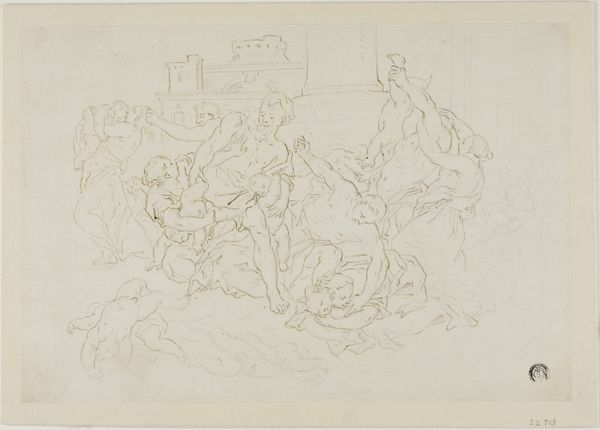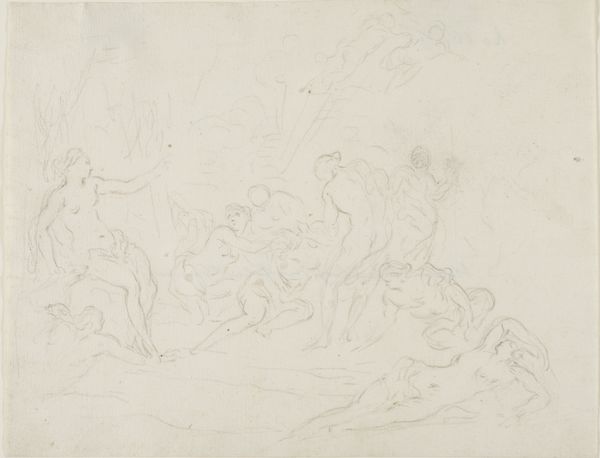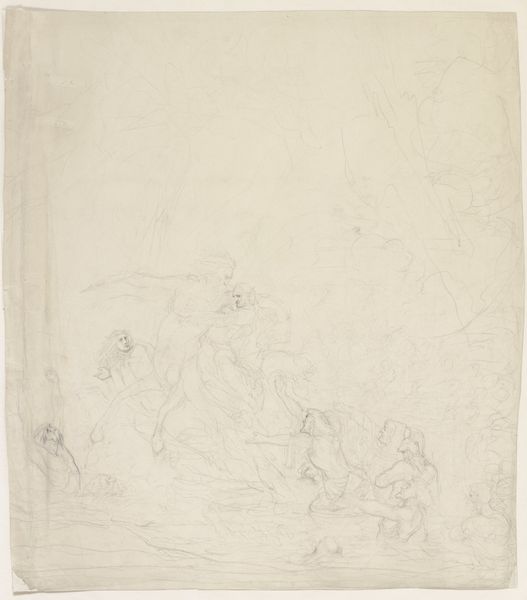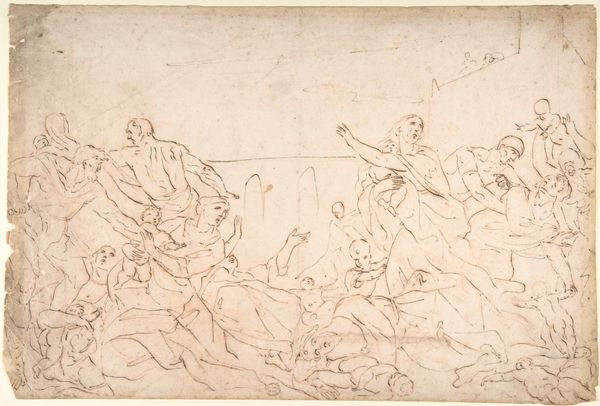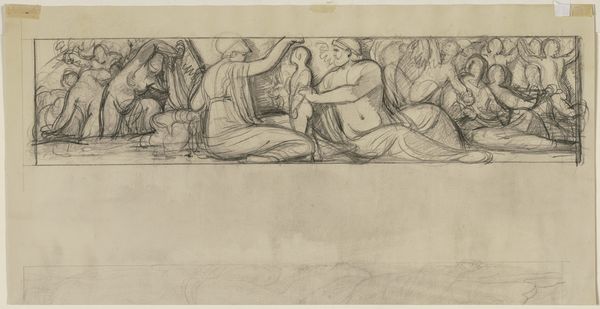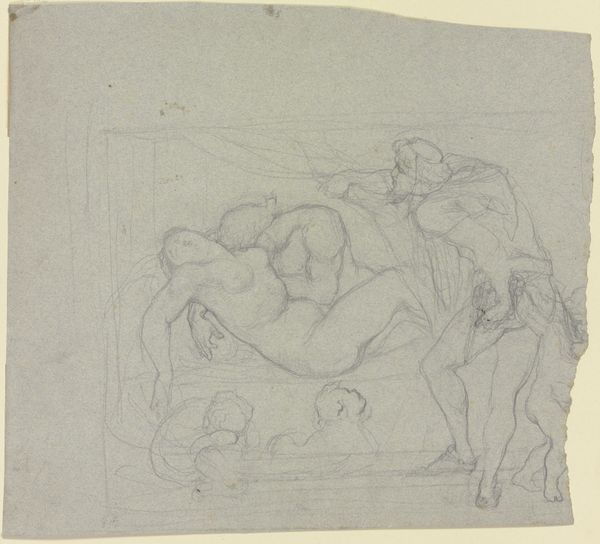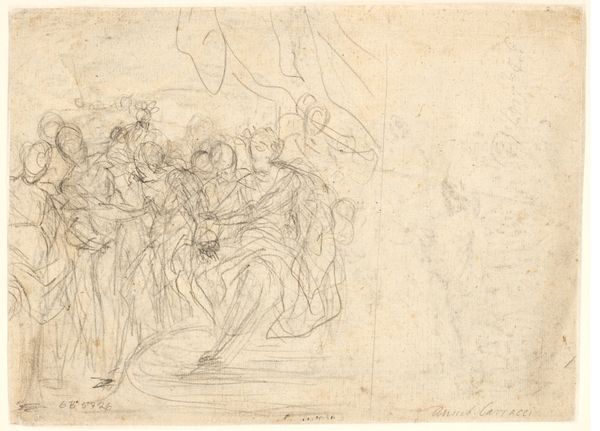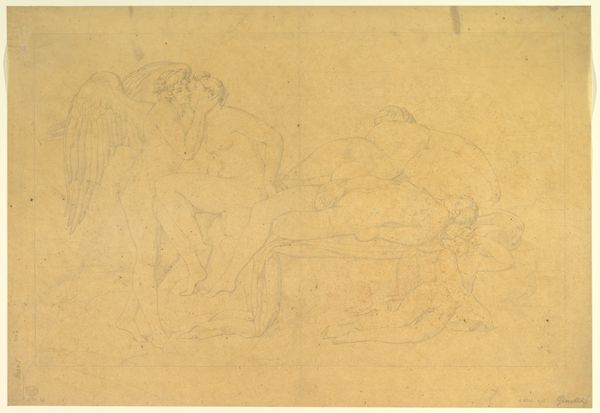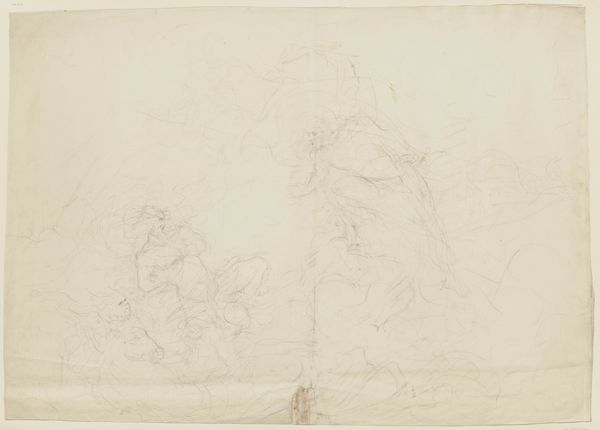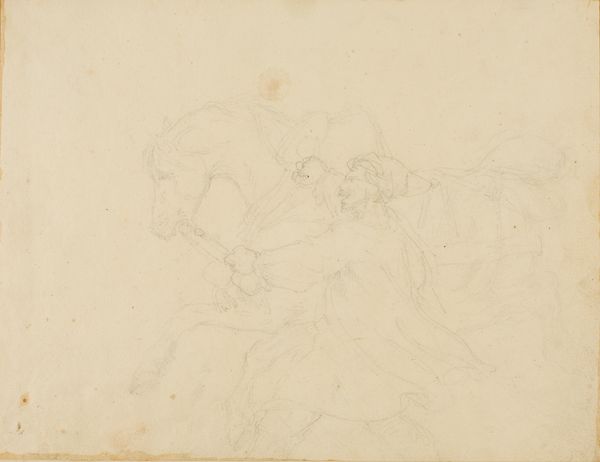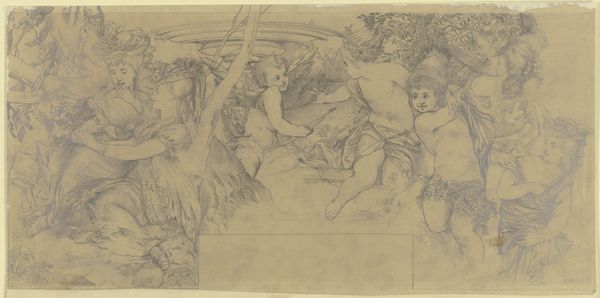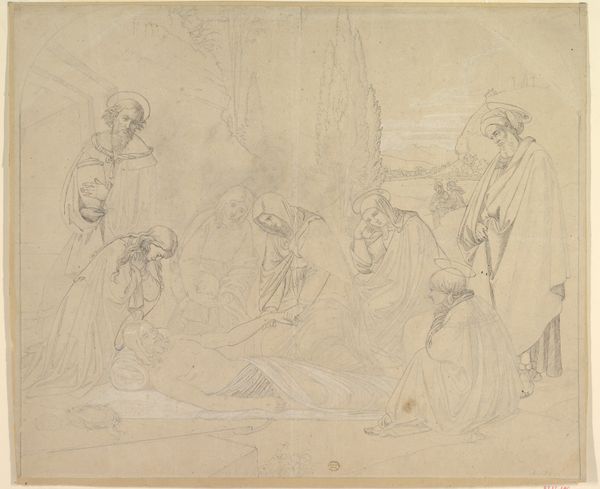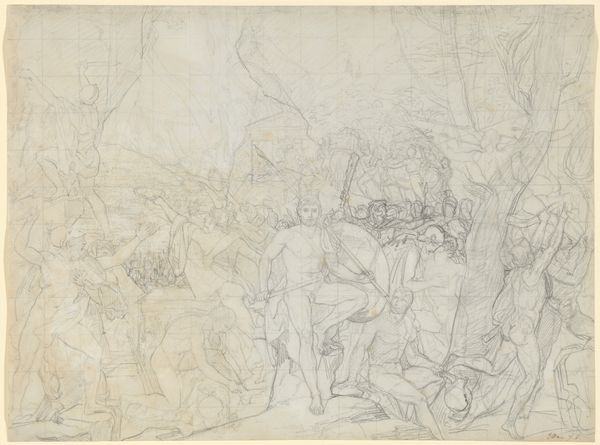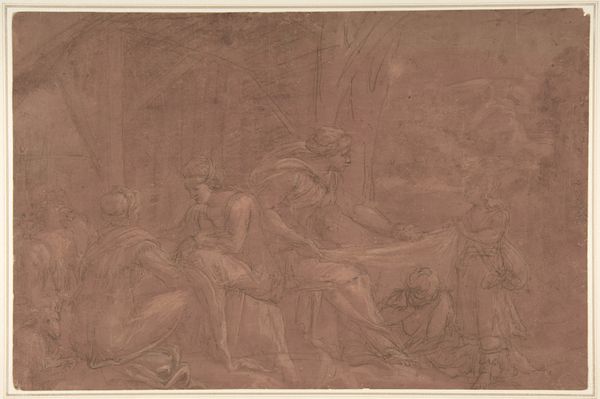
drawing, pencil
#
drawing
#
figuration
#
romanticism
#
pencil
#
history-painting
Dimensions: 19 1/8 × 24 7/8 in. (48.5 × 63.2 cm)
Copyright: Public Domain
Curator: Here we have "The Vision of Ezekiel" by Bonaventura Genelli, a drawing rendered in pencil somewhere between 1818 and 1868. Editor: Wow, what a dynamic sketch! It almost vibrates with an unsettling energy. It reminds me of when I was a kid trying to capture a dream right as I was waking up—all flurry and distorted shapes. Curator: Absolutely! Genelli's Romantic style really comes through. It's an attempt to depict something colossal and rather overwhelming from the Old Testament. Notice the four figures surrounding the prophet—each possessing distinct animalistic features, these represent the Tetramorphs, symbols from Ezekiel's vision. Editor: It is quite chilling to see them presented so rawly and unidealized. I am accustomed to thinking about how the winged creatures representing Matthew, Mark, Luke and John found their ways into medieval iconography. But here it is like we are observing some pagan archetype or atavistic holdovers stripped of their later grace. What's intriguing is that lion face right at the fore—all that emotion barely sketched out, still present. Curator: Yes! It gets at something deeply primal, and really captures that sense of divine awe but with a certain terror. This isn't the cozy, reassuring God of stained-glass windows. Editor: Exactly. More like a glimpse into something terrifying and exhilarating, far beyond our usual framework of experience. It also makes you realize how artists continually borrow, reframe, and adapt archetypes, like constantly re-mixing a tune we’ve all half-remembered from eternity. It would be great to compare this work to illuminations of Hildegard of Bingen, wouldn’t it? Curator: That would be amazing to delve into and an interesting addition, next time! Genelli provides an unnerving, more intimate vision of divine encounter. This sketch isn't just about religious representation; it is, through the figures chosen and rendered, also a window into the artist's subjective and intellectual experience. Editor: And, in a way, back to ours. Leaving us here wondering. The drawing captures more than just a vision, but some seed of existential questioning. What remains with me is not religious certainties but, precisely, unsettling doubt and potential for interpretation.
Comments
No comments
Be the first to comment and join the conversation on the ultimate creative platform.
